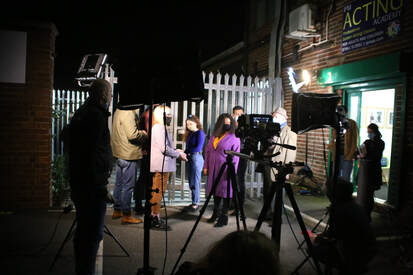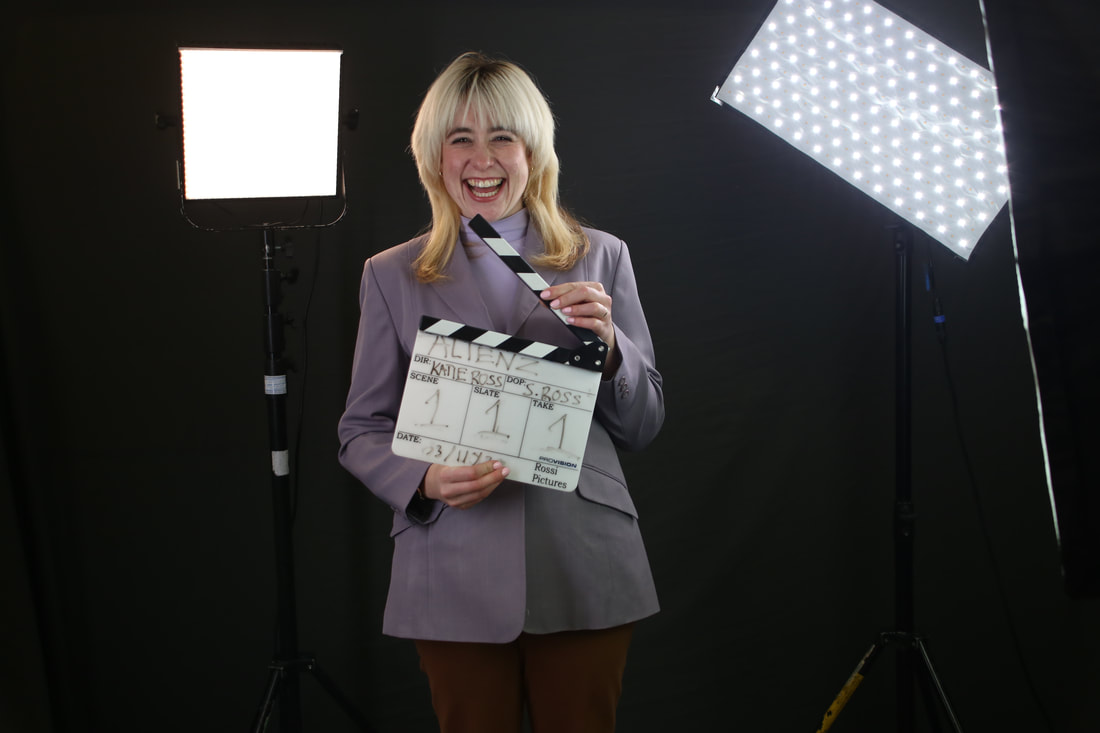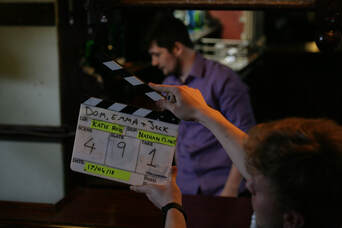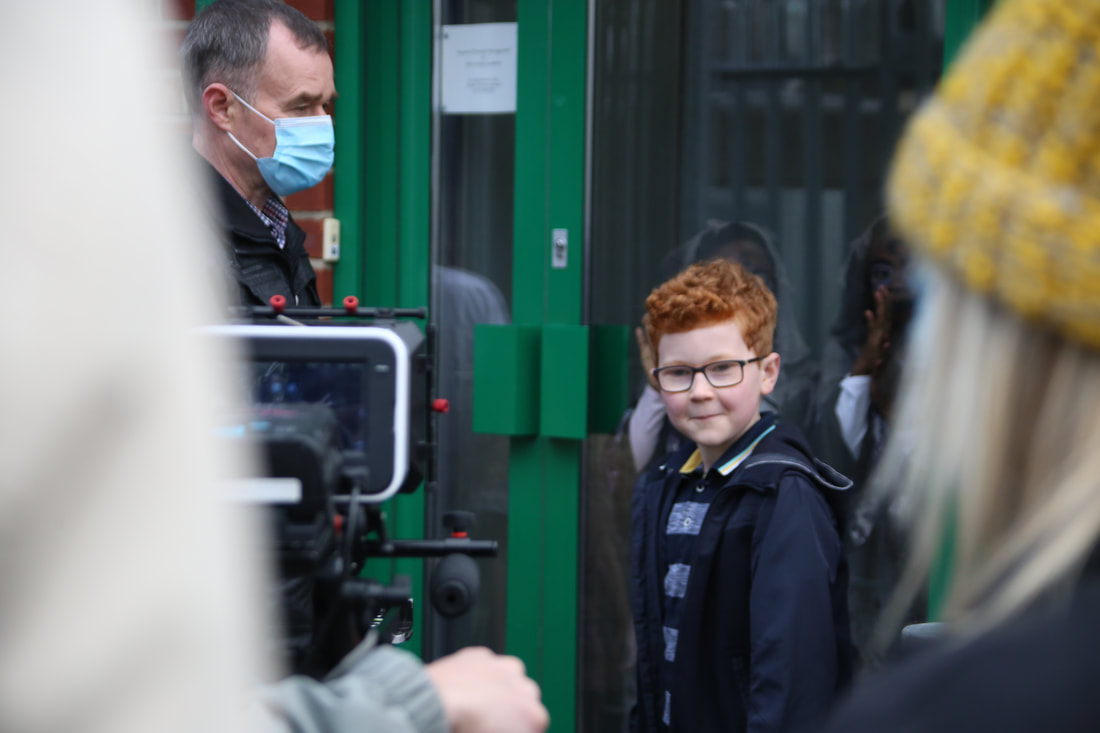|
Film and TV has developed so much in the production department over the last couple of decades, that it astounds audiences how they managed to achieve what we thought was the impossible. Crazy stuntmen flinging themselves from buildings, explosive gunfights between characters and car chases that have you biting your nails and hanging off the edge of your seat. After the credits have rolled, and you and your viewing party trade your favourite lines and scenes of the film, the moments that stand out to you begs the question: “But wait… how’d they do that?”. Well, we cannot reveal all the tricks of the trade can we (got to leave some things a mystery)? But to find out the top 5 industry “secret” props, keep on scrolling…
Sugar glass (also known as breakaway glass and candy glass) is a prop used in many different forms- and is simply made from mixing dissolved sugar, water then heating to an extremely high temperature (about 150˚C!) until it can be formed into its desired shape (e.g. a bottle or thin sheet). To ensure it does not (re)crystallise, corn syrup is often used to aid the consistency. Because it resembles glass both in look- and when broken in a scene shatter similarly- and is unlikely to cause any harm, it is considered an effective and inexpensive prop to manufacture. The downside? Due to the chemical structure of its main ingredient sugar, it must be used quickly after it is made as the brittle quality that is achieved only last so long.
Fake Money
Considering the strict laws surrounding money, its distribution and usage, even the material (cotton instead of paper), lack of watermarks and security numbers all serve to make sure the illusion stays intact. If you notice, we never tend to see money in an up close shot whenever it is shown, sometimes even just being printed on the side the audience is viewing- all these add to the “authenticity” of the fake money. Ironic right? The faker the better as any attempt that may be viewed as duplicating real currency is seen as counterfeiting and is met by strict government investigation- ouch.
“Are they really driving…?
I know I am not alone in the thought of watching a scene of characters in a car travelling through the streets of a metropolitan area, casually engaging in conversation…but their eyes leave the road a touch longer than is deemed safe or their hand movements on the steering wheel don’t quite sync up? Come on I know we have all wondered: “Are they really driving and delivering their lines that perfectly?”. To answer your burning question, sadly no. Ahh but do not despair as it is really the safest option when filming a simple driving scene compared to a stunt driver commandeering a high-octane car chase.
Add to this that the actor must mime the driving process, it saves time and money compared the traditional (and slowly disappearing) use of green screen with a stationary car. With today’s technological advances, it sure is nice to see that we have moved away from the days of repeating background and bad “driving”- I am looking at you Knight Rider.
Drop your (Prop) Weapons!
Times gone by a trick like this was semi-difficult to pull off, making the use of quick cuts of the camera or miming the shot with the intended actor. Nowadays, like the prop mentioned below, it can be a combination of visual effects mixed with postproduction touch-up and image editing. It all is dependant on the budgeting, tone of the scene and action that is being performed, for example if it just a simple extra being killed by our hero without any consequences, it most likely will be shot in one quick wide shot with a blood pack being added to bolster the legitimacy of the gory death. However, if the scene is to depict a vengeful, violent killing meant to be shown in close up detail, there is a combination of a retractable blade (practical effects), with the squib (small, explosive device filled with fake blood- again practical effect) setting off, then if required adding those extra details in CGI to add to the illusion. This one remains somewhat of mystery to most, as there is a method called impalement illusion, wherein the actor wears a corset (or frame) around their body with “entrance” and “exit” slot for the blade to fit through. Again, this is something that screen productions have utilised over the years and even stage magicians as a popular act but there is still some secrecy shrouded around this technique. Hmm, I guess a magician cannot reveal all his tricks.
Either using practical effects such as elaborate prosthetics being produced by special effects props specialist to fit the scene, design and body of the actor it will be fitted on or the detail given in post-production VFX; the desired look can be achieved easily with todays options. In Marvel’s Iron Man, the iconic chest arc reactor worn by lead Robert Downey Jr was achieved without the need for CGI; accomplished by constructing a replica of the actor’s chest spray painted with makeup to match his skin tone, whilst holding the main design piece in the middle. In other more meticulous scenes, CGI may be needed to add an additional layer of legitimacy to the screen. This can be seen in 2014’s RoboCop, featuring a scene of detailed operation that looks so real you can see pieces of brain matter on the surgeon’s tools- but you will be potentially shocked to know that that was all CGI. I know blew our minds too.
So there you have it, our Top 5 industry tricks for the special effects and technically derived moments in filmmaking. There are many more industry tricks that create the wonders of film and television. From make-up to props, film has created these techniques way before CGI. It has always been one of the greatest parts of the industry is bringing together the tricks. What are some of your favourite film moments using these techniques?
Want to know how to work with props and special effects? Join IPM Acting Academy today for industry, actors training today!Have you ever been sat down glued to your favourite cartoon as a kid, hearing the vibrant voices of its characters that make them feel almost real? Voice acting is a diverse and changing industry and it’s not enough to just have a “good voice”- you have to offer some versatility the same way a screen actor would have to show their visual emotional range. From video games, cartoons, animated films and television advertisements these actors have had long running careers in the voice-over industry that spans over several decades. Read below for our top 10 voice actors to find out some of the names behind the voices: you might just be surprised and a little inspired…
Troy BakerPerhaps one of voice overs best kept secrets, Baker has voice acting credits to rival the greats despite being only 44 (arguably one of the youngest prolific voice actors in the industry); and he is steadily adding to his résumé. Typically working within the field of video gaming, Baker has shown a confident approach to the leading action man role in combat, fighting based games. However the role that brough critical acclaim and international attention was his role as Joel, the protagonist of zombie horror survival game The Last of Us, which incorporated the use of motion capturing in its development process, in order to fully capture the psychological core of the main characters. With this role, Baker epitomises the lone wolf persona, simultaneously offering emotional depth unseen in games before then. Baker’s Joel became a standout character and a landmark in the storytelling aspect of modern gaming.
Jim CummingsArmed with a powerfully intimidating voice fit for kings and gods, Cummings is another staple in the voice acting community having played countless roles over the years. Alongside the legendary Mel Blanc, Cummings is the only other actor to portray the iconic Tasmanian Devil; a character known to communicate in growls and snarls instead of actual speech tells us that sometimes being a voice actor is being able to access those primal, animalistic sounds. Although another anthropomorphic cartoon character, Jim Cummings has portrayed the lovable Winnie the Pooh (and his energetic friend Tigger), demonstrating his skill at harnessing the cadence of his voice to suit the softly spoken Pooh (The New Adventures of Winnie the Pooh-1988).
Dan CastellanetaLong-time fans of the iconic animated series The Simpsons will know the man responsible for breathing into life our lovable, drunken patriarch Homer Simpson is none other than Dan Castellaneta. I would confidently say that Castellaneta’s Homer is one of the hardest voices to perform, as he achieved a voice quality into the Duff loving family man that few can replicate. Other fan favourites Castellaneta voices include Homer’s elderly father Abe “Grampa” Simpson, Krusty the Clown, Groundskeeper Willie, Homer’s perpetually inebriated cohort Barney Gumble, and hundreds of others spanning over his 690-episode credited appearances in this show.
Want to learn key skills of voice performances? Or looking to start your Acting Career? Join IPM Acting Academy Today!Aside from taking part in incredible fun, and acting in some professionally filmed material, we believe that there are many reasons to join acting classes! IPM team member, Katherine, has put together this latest blog post from her perspective of a training actor to help you make that first decision of joining classes today!
They looked so confident and I wanted to feel like that. I wanted to do something about my pesky nerves! I remember mustering up the courage to walk to my first acting class, having persuaded a friend to come along with me. I was shaking with nerves and curious as to what would be expected from me. This is what I found by taking an acting class and what you can find too!
2. Become More Body ConfidentI distinctly remember a presentation I did in front of the class. I had no idea what to do with my body, how to stand, what to do with my hands, where to look. The more I focused on what people were thinking about me, and the way I looked, the more awkward and nervous I undoubtably looked. It felt like an endless cycle. I was not used to having all eyes on me, but practicing speaking in front of people at acting class, I began to feel more comfortable with the spotlight on me. We focused on relaxing the body. Inspired by yoga practices, we took time to feel in touch with our bodies, ready to focus and set our minds to the class or performance ahead. We would also experiment with movement exercises. This would be an opportunity to let lose, throw some energy around and have a laugh with group. When you begin to film your performances and watch yourself back on camera, you can see how important it is to relax and be aware of how you use your body when approaching a character.
4. Learning it is Okay to be VulnerableI mentioned I was an insufferably shy child, and I wanted to change that. I realised that pushing myself out of my comfort zone in acting class was really good for me. It was a safe space for me to experiment and tap into my emotions, directing them towards a creative goal. Performing in an embarrassingly funny scene, a romantic storyline or an outburst of tears and terror, can feel scary. You are putting yourself in a vulnerable position, allowing yourself to express these raw feelings with all eyes on you, in front of the camera. As this became a regular exercise, I learnt that it’s ok to feel those emotions in real life. It is ok to be vulnerable. I continued acting classes throughout my entire education and beyond. As I continued to grow up and experience new things and feelings, acting has definitely made me feel more comfortable expressing my emotions - incredibly helpful as you navigate your way through life, and healthy for friendships and relationships. 5. Make New Friends & Have Fun
So, there you have it. 5 Reasons Why You Should Join an Acting Class. As you can tell, taking an acting class really did change my life around for the better. Now, I am not afraid to speak up, I can confidently express my opinions and make positive connections in social situations, and let's not forget that eye contact. My friends and co-workers today cannot believe I used to be a shy child! Want to start Acting Classes today? Join IPM Acting Academy and find your new confidence through On-Screen Acting, find a New Career & More! Get in touch on the button below! |
AuthorCastings, Industry News, Job Opportunities, Careers Advise and much more. Archives
February 2024
Categories
All
|
Contact Us |












 RSS Feed
RSS Feed
